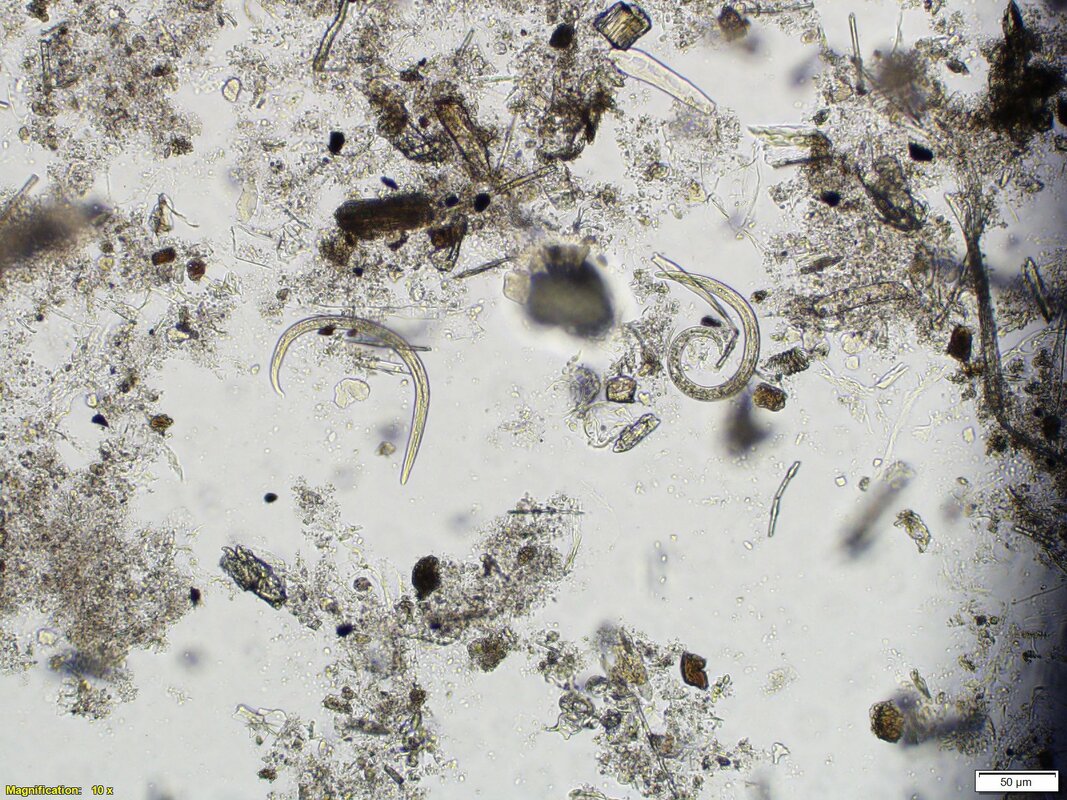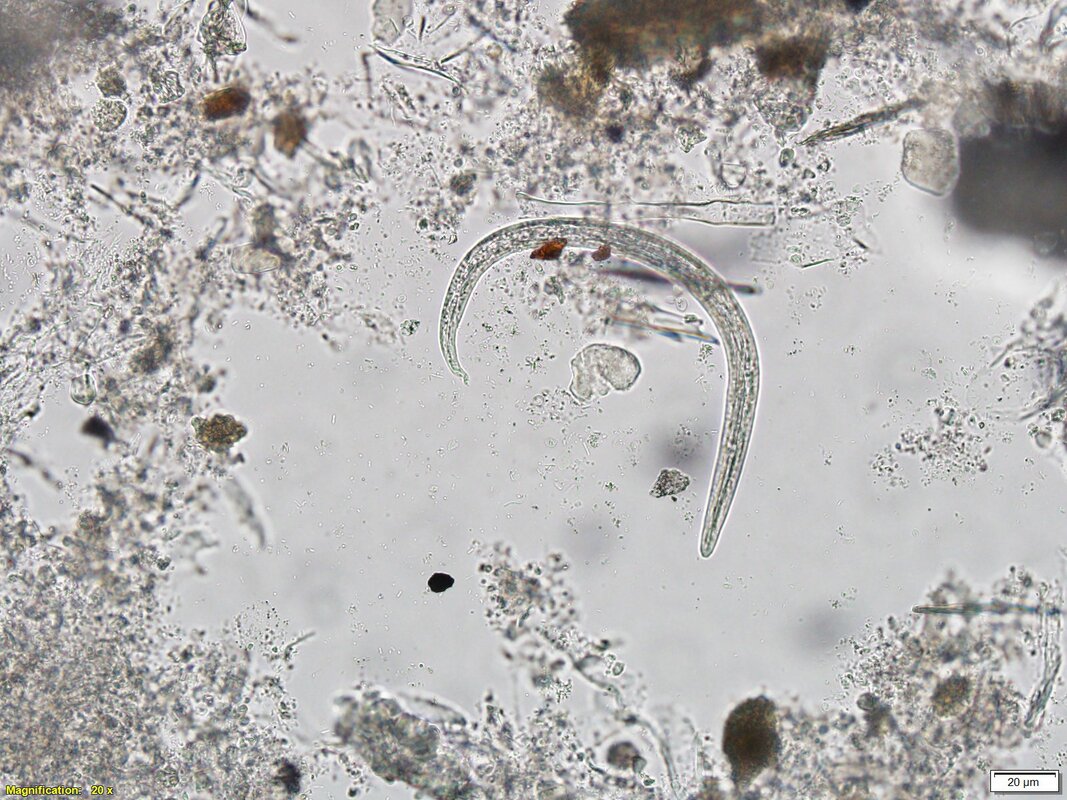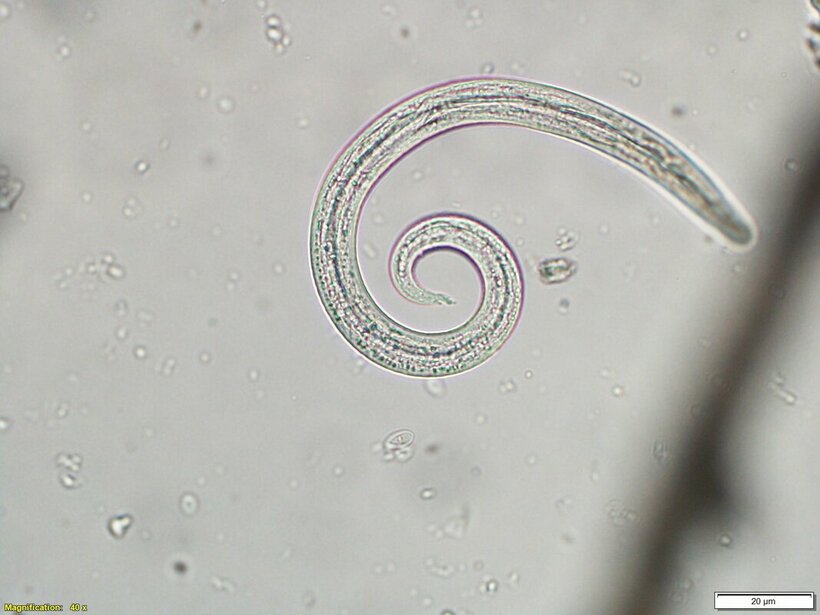Coughing kittenAn approximately 6-month-old, intact male, recently rescued, domestic short-haired kitten was presented to a small animal clinic in Oklahoma with a 2-week-history of intermittent coughing. A fresh fecal sample was submitted to a parasitology diagnostic lab for a general parasitology examination. Centrifugal fecal flotation with 33% zinc sulfate solution (specific gravity, 1.18) revealed a moderate number of nematode larvae (Figure 1 & 2). Larvae were approximately 400 microns in length, and the terminus of the tail has a characteristic kink and spine (Figure 3). Figure 1: 100x magnification. Figure 2: 200x magnification. Figure 3: Focusing on the tail of the larva. Showing the distinctive kink with dorsal spine. 400x magnification. AnswerAelurostrongylus abstrusus first stage larvae. Aelurostrongylus abstrusus is a feline lungworm, which distributes worldwide. Felids serve as a definitive host and acquire the infection by ingestion of an intermediate host (snail or slug) or a paratenic host (rodent and bird). Adult worms are located in the lung parenchyma of the definitive host. First-stage larvae are released in the airways, coughed up, swallowed, and passed out in the feces. Gold standard diagnostic test to recover A. abstrusus L1s is Baermann technique; however, a regular centrifugal fecal flotation test may also detect L1s. Infected cats may be asymptomatic or can have respiratory signs such as coughing, dyspnea, and tachypnea. Click on the following link to watch a video of a live L1 of A. abstrusus! >>> www.youtube.com/watch?v=NGNPjBJBCoc References: Zajac & Conboy, Veterinary Clinical Parasitology 8th ed. |
Archives
July 2024
Have feedback on the cases or a special case you would like to share? Please email us ([email protected]). We will appropriately credit all submittors for any cases and photos provided.
|



